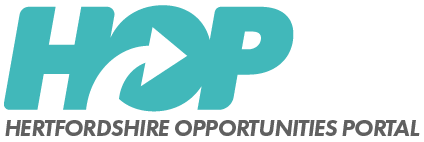CV: STEP BY STEP GUIDE
HERE IS A FULL GUIDE TO GET YOUR CV UP TO SCRATCH.

-
1
Steps to take before you start writing
The Purpose of a CV
Your CV is your tool to get you to the interview stage. You should think of it as a sales pitch and you are the product. This means you need to know what the employer needs, using language they understand. You can demonstrate this by highlighting your relevant skills and achievements that correspond with the job role specification. A CV is not a life story so be specific, clear and relevant.
TIP: Use a clear and concise layout. No fancy formats, make your information easy and accessible.The Recruiter and your CV
The first stage involves your CV passing the 30 second test. This is where the recruiter will skim read your CV and decide whether you will go into the ‘yes’ ‘no’ or ‘maybe’ pile. So, your CV has to stand out, this means presentation is key. It needs to be easily navigable with digestible chunks of information and relevant words throughout.
The Interview and your CV
The next stage is how your CV will be used in an interview setting. Your CV will act as a spring board into some of the questions the interviewer will ask. Be certain you know your CV, have examples ready for each skill or job role you have included. And be prepared for more challenging ones that are asking for more detail about your job history and experience such as: Explain how you have coped with a difficult situation? Tell me about a time when you have shown leadership skills?
TIP: Be specific in your examples and relevant to the job role and organisation.What The Recruiter wants to Know
It is important to be specific. How well can you demonstrate that you have the skills the employer is looking for? Why do you stand out from other applicants? They want someone who is a problem solver and a good fit within their organisation. Using their key buss words or phrases shows that you understand who they are and what they need.
-
2
How to write your CV
Overall Structure
The structure of your CV is the first thing the recruiter will see and play a big part in passing the 30 seconds test. If you get this right it shows the recruiter you are professional, have an eye for detail and can communicate effectively.
ORDER
Your CV can be broken down into 8 sections, all of these sections give an overall picture of your experience and capabilities.To achieve an easily navigable CV include:
- Use bold to differentiate titles of job roles/company or organisation names/ provider name
- Alternatively, a table could be used to separate the key information
- Use a chronological order
- Use a clear and professional font and font size
- Make sure it’s no longer than 3 pages
- Use bullet points and the Manner Action Benefit model
- Use correct and easily visible contact information
- Have a professional email address
Personal detailsYour personal details should be positioned at the top of your CV clearly formatted, these should include:
- Your full name
- A professional email address
- Your mobile number
- Your address
Personal profile
A personal profile should be the next thing the recruiter sees. This should make you stand out by including:
- Who you are
- Your key skills, attitude and what you are looking for
- This should be around 3/4 sentences, demonstrating you can effectively communicate
Key achievementsThese should be relevant things that you have done successfully or with skill, they could involve:
- An award
- A benefit to the company or customer
- A problem you solved
- Ideas or innovations that you/ took part in introducing
- Use the Manner Action Benefit model
- Manner- the way you did this- use an adverb- consistently/successfully
- Action- what it was that you did- use a verb- maximised/created
- Benefit- to the company/customer
Key skills
These should be relevant to the role you are applying for
TIP: Go through the job specification and highlight the skills required, try and demonstrate these throughout your CV
You should be able to:
- Give an example for each using Manner Action Benefit model
- Make sure you include the result- so if you demonstrated leadership:
- Feature- describe the way you did this e.g. I consistently lead in regular team meetings
- Action- what it was that you did e.g. creating new short and long term goals
- Benefit- what was the outcome? e.g. this resulted in meeting the launch deadline and the project being successful, with positive feedback from the customers.
Employment
These should be listed by most recent or most relevant to the job role you are applying for, they should include:
- Some basic information about the role and the company such as, the title of the role, the company or organisations name and the start and end dates. These should be clearly identifiable by either using bold or using a table.
- The duties should be relevant to the job role you are applying for. This means that these should be adapted to fit different job roles.
- Use the Manner Action Benefit Model
- Concentrate on recent jobs
Education
- Start with your most recent place of study/course or award.
- Detail any key achievements
- Any relevant training
- Include years and dates to each place of study/course or award.
Interests
- Listing your interests can make your CV stand out, this can give the recruiter a taste of who you are.
- They could also be relevant to the job role and show that you have a real interest in that field.
References
- Include the name and address of two, most recent or relevant job roles. Don’t include contact information yet until a later stage. if you can't supply this then a personal tutor will be sufficient.
-
3
Checking you have given the correct contact details is crucial.
Here are the top 6 aspects employers want to see on your CV:
• Layout and presentation
- Eye catching
- Easy to read and accessible• Work experience
- What you’ve done in your career• Achievements
- Tangible and measurable so that they are easy to extract• Education
- Relevant qualifications• Personality and skills
- Giving a flavor of who you are and what you can do• Relevant experience to the role
- How your skills and achievements are relevant to the role. this demonstrates research into the job role and what the employer needs
- Jumps out at you- there is a clear advantage to having you as part of your team.Remember: These will be different based on the sector, the role, the organisation and personal preference.
Do the test:
Once you have a completed CV, test whether it is generic or specific?
Being specific and relevant to the job role is key. This will show the employer:
- You have done your research on the company
- You can communicate effectively, using their language
- You have read and understood the job role and can demonstrate that you are the right person for the job.Here is a checklist you can use before you send off your CV to the employer:
• Have you researched the general job role?
Research, HR, sales, engineer• What will your responsibilities and duties be?
Solving customer issues, updating social media, office maintenance, managing projects• What industry is the job role within?
Healthcare, law, retail, travel• What type of company is it?
Size? Private/public sector? National/international? New/long standing?• What are the essential skills needed for the role?
Research the company- what do they do? There goals?
Study the job specification, highlight the skills- demonstrate that you have these and give a relevant example.• Have you done your research?
State what you can bring to the company- this should be in relation to what the employer needs. Remember you need to stand out.If you have ticked 4-6 of the boxes you have a specific CV and should expect to be interviewed. Anything less and your CV is too generic, go back using the checklist and refine!
TIP:
Two pages of A4 is just right. Don't be afraid of white space, as long as you have the essential information.
TIP:
Write a list from the job description of the key skills & attributes that they are looking for. Then look at your CV, have you clearly demonstrated each one with an example?
TIP:
Do the same for the language that is used in the job description. Highlight buzz words that are specific to the company and try and incorporate these in your CV. This will demonstrate that you understand the company and have done your research.

